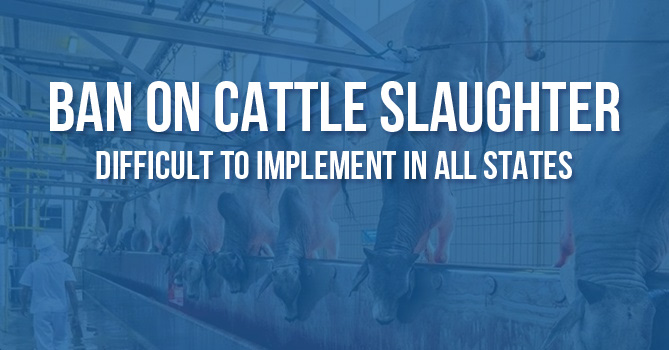Beef ban and the controversy surrounding it, in fact even the idea of Gau Raksha and self-styled vigilantes, is not a new one. It has existed for ages with staunch Hindus opposing cow slaughter for beef consumption. Eventually, like every mature and all-embracing heterogeneous society, Indians decided to deal with the issue. Muslims would often desist from eating beef in front of their Hindu neighbours and friends and the majority of the Hindu populace would rather circumspectly ignore the issue.
Then rose a new crop of people who discovered that the issue of beef – eating or banning – could be used to cause much unrest, could be used to bully others, could be used for very narrow personal gains. We call these people the politicians of India.
So now along with the cow which is sacred to the Hindus all forms of beef including the meat of bulls, bullocks, and buffaloes – form a ‘valid’ cause for outrage. Some plead the cause of freedom and go ahead and slaughter a cow mid-market. Not unlike the Youth Congress activists who slaughtered a cow in full public view, going on to cook and distribute its meat. Respecting the sentiments of a particular religion be damned. And let us not forget those who decided to lynch and kill a man and hurt his family because they were suspected of storing beef in their larder. Add to this the inane acts of violence, beef festival, and the force feeding of beef undertaken by students of an erudite, highly acclaimed institution such as the IIT, and look at India’s distinguished judiciary calling for the cow to be labeled India’s national animal – some 7 decades after independence – and perhaps you may start to grasp the senseless frenzy that is now holding the country in its sway.
The Cattle Sale Ban
The latest round of frenzy is due to the Prevention of Cruelty to Animals (Regulation of Livestock Markets) Rules, 2017, which have taken effect on 23 May this year. This is a new set of rules that have been introduced under an old legislation – the Prevention of Cruelty to Animals Act which was passed by the parliament in 1960. The new guidelines dictate that though sale of animals is still permissible, the purpose of the sale will define the legality of the transaction. This means that bovine animals such as cows, bulls, buffaloes, calves, heifers, camel etc. may not be bought or sold for the purpose of slaughtering. This means that existing abattoirs and slaughterhouses will now have to procure their animals straight from the farms. This is quite an impossible proposition since farms supplying the animals are often located in rural districts and cattle traders bridge the geographical gap between the supply and the demand.
Is It A Beef Ban?
The new set of rules introduced is not a beef ban or a prohibition of cattle meat consumption. A number of states in India have laws against slaughter of cow alone but there is no nationwide law regarding the sale or consumption of beef. In fact, cow slaughter is legal and beef consumption is popular in some states. With the introduction of these new rules, however, the supply chain of cattle is choked which will effectively lead to a drastic drop in supply of beef.
Why Are Some States Protesting?
Some state governments have voiced their protest against the introduction of this new set of rules. Here are some of their objections –
- The rules that have been introduced are notified under the 1960 act but the rules do not justify the objectives of the Prevention of Cruelty to Animals Act, 1960. The act does not mean to prevent slaughter but rather looks at humane treatment and less painful ways of slaughtering animals. To this effect, the rules go beyond the act itself.
- The Prevention of Cruelty to animals act is a generic one and points to all animals other than human beings. The rules introduced are particular to bovine animals and restricts the scope of the act itself.
- Cattle slaughter falls under the state legislature’s jurisdiction. The new rules introduced by the centre violate the state’s prerogative to make such laws.
- Cattle welfare and organization of cattle markets too is a state subject. The centre’s intervention by attempting to register cattle markets is not welcome.
The new rules have caused much angst in states where beef is widely consumed. A state-of-the-art abattoir in West Bengal has been forced to shut down recently. There has been a huge outcry among the cattle traders of the country. The Madras High Court has provided some relief by granting an interim stay on the implementation of these rules but this is by no means the end of the debate. The government may soon have to revise and rethink these new guidelines in the light of mass opposition. Having said that, we must also note with immense sadness that some of the demonstrations of protest by political parties, students, and organisations these days have reflect cheap theatrics and simply serve to fuel communal tensions.





